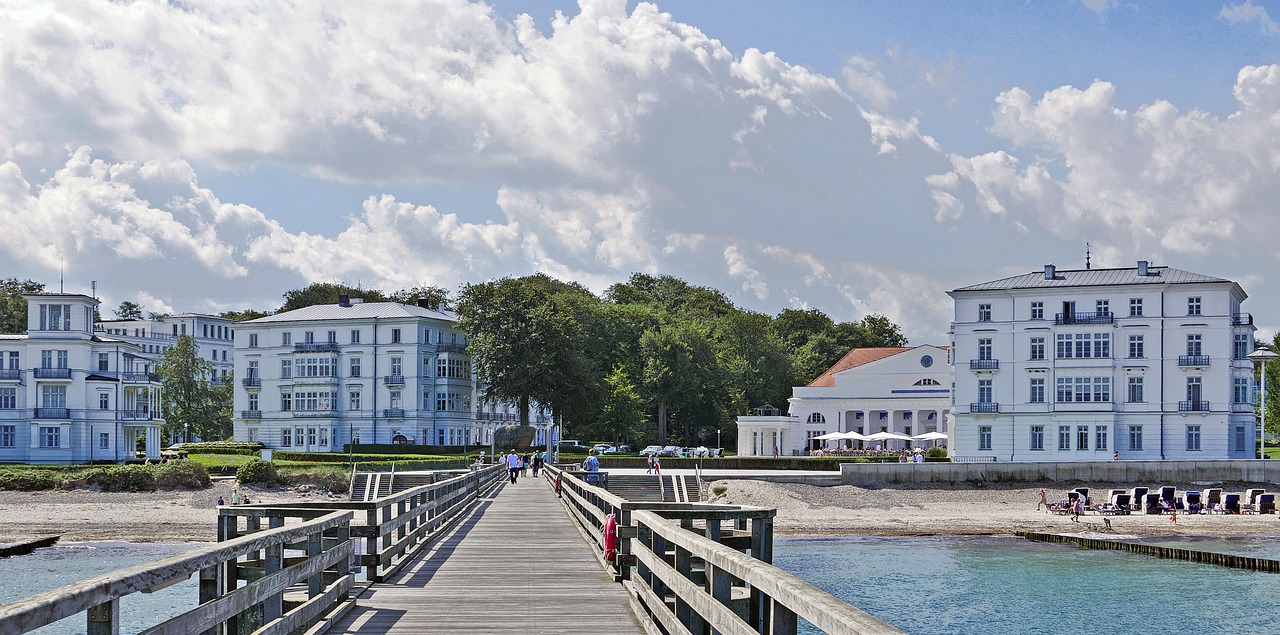Architectural Evolution: Germany’s Stunning Journey from Medieval Marvels to Smart Cities
Germany, a country renowned for its engineering process and cultural contributions, boasts a diverse architecture that reflects its history, innovation, and artistic expression. From medieval castles to modern sustainable structures, Germany’s architectural journey is a captivating narrative that weaves together tradition and innovation. In this article, we delve into the architectural tapestry of Germany, tracing its evolution through time.
Historical Legacy: Medieval Marvels and Renaissance Gems
Germany’s architectural heritage is a tapestry woven over centuries. Medieval times left an indelible mark in the form of stunning castles and cathedrals. The Cologne Cathedral, a masterpiece of Gothic architecture, stands as a testament to the medieval craftsman’s dedication and skill. The Heidelberg Castle perched atop a hill, and the fairytale-like Neuschwanstein Castle, although built much later, offer a glimpse into the romantic and enchanting side of German architecture.

The Renaissance era brought forth a blend of Gothic and classical elements. Structures like the Palace in Dresden showcase intricate detailing and symmetry, reflecting the cultural and artistic renaissance sweeping across Europe.
Schloss Johannisburg stands as a remarkable testament to Renaissance architecture. Its intricate design and meticulous detailing showcase a harmonious blend of Renaissance elements, offering visitors a glimpse into the grandeur and artistic spirit of the era. Inside, the opulent interior spaces continue to echo the Renaissance aesthetic.

Baroque Extravaganza: Ornate Wonders
The Baroque period witnessed Germany’s architectural landscape transforming into a realm of opulence and grandeur. The Sanssouci Palace marries Baroque aesthetics with enchanting gardens, creating a harmonious and picturesque ensemble. This extravagant architectural movement not only reshaped the physical environment but also left an indelible mark on Germany’s cultural identity, showcasing the nation’s penchant for artistic expression and architectural innovation.
Bauhaus Revolution: Modernism Takes Center Stage
The 20th century brought about a paradigm shift with the Bauhaus movement. Germany became the cradle of modernist architecture, emphasizing functionality, simplicity, and minimalism. Bauhaus pioneers like Walter Gropius and Ludwig Mies van der Rohe left an enduring legacy in architecture. The Bauhaus School building is a prime example of the movement’s design principles. This revolutionary approach to design not only redefined architectural aesthetics but also laid the foundation for a global design philosophy that continues to influence contemporary architecture and urban planning, illustrating how Germany’s architectural contributions have resonated far beyond its borders.
Post-War Rebirth: Rebuilding with Purpose
The devastation of World War II led to an era of reconstruction and renewal. Germany’s architecture during this period was characterized by utilitarianism and a focus on urban planning. The Frankfurt Kitchen, designed by Margarete Schütte-Lihotzky, pioneered the concept of an efficient, compact kitchen layout that still influences design today. Amidst the rubble of destruction, this era marked not only the physical rebuilding of cities but also a symbolic renewal of hope and resilience, with architectural innovations like the Frankfurt Kitchen embodying the spirit of practicality and forward-thinking solutions for a transformed society.

Contemporary Marvels: Sustainability and Innovation
Contemporary German architecture embodies sustainability and innovation. The Reichstag Building in Berlin, with its striking glass dome, seamlessly integrates modern technology with historical architecture. The Elbphilharmonie is an architectural marvel, harmoniously blending an old warehouse with a bold glass structure. These architectural masterpieces not only captivate the eye but also reflect Germany’s dedication to pushing the boundaries of design while honoring its environmental responsibilities.

Urban Integration: Balancing Old and New
Germany’s cities exemplify the country’s commitment to blending history with modernity. In cities like Munich and Nuremberg, medieval buildings stand shoulder-to-shoulder with modern skyscrapers, creating a unique urban panorama that bridges time periods. This harmonious coexistence of architectural styles not only showcases Germany’s rich cultural heritage but also serves as a reminder of its ability to adapt and evolve. As you stroll through the cobblestone streets of these cities, the juxtaposition of old and new invites contemplation on the passage of time and the stories held within each brick and pane of glass.

Future Horizons: Green Architecture and Smart Cities
Looking ahead, Germany continues to lead in green architecture and smart urban planning. Efforts towards energy efficiency, sustainable materials, and green spaces are shaping the future skyline. Smart cities like Freiburg and Hamburg are experimenting with innovative technologies to create livable and eco-friendly environments.
In conclusion, Germany’s architectural heritage is a mesmerizing journey through time, showcasing the nation’s resilience, creativity, and cultural wealth. From medieval castles to cutting-edge sustainable designs, Germany’s architectural diversity mirrors its multifaceted identity. As the country strides into the future, its architectural landscape promises to remain a testament to the harmonious coexistence of tradition and innovation.
Curios? – Stay tuned!


